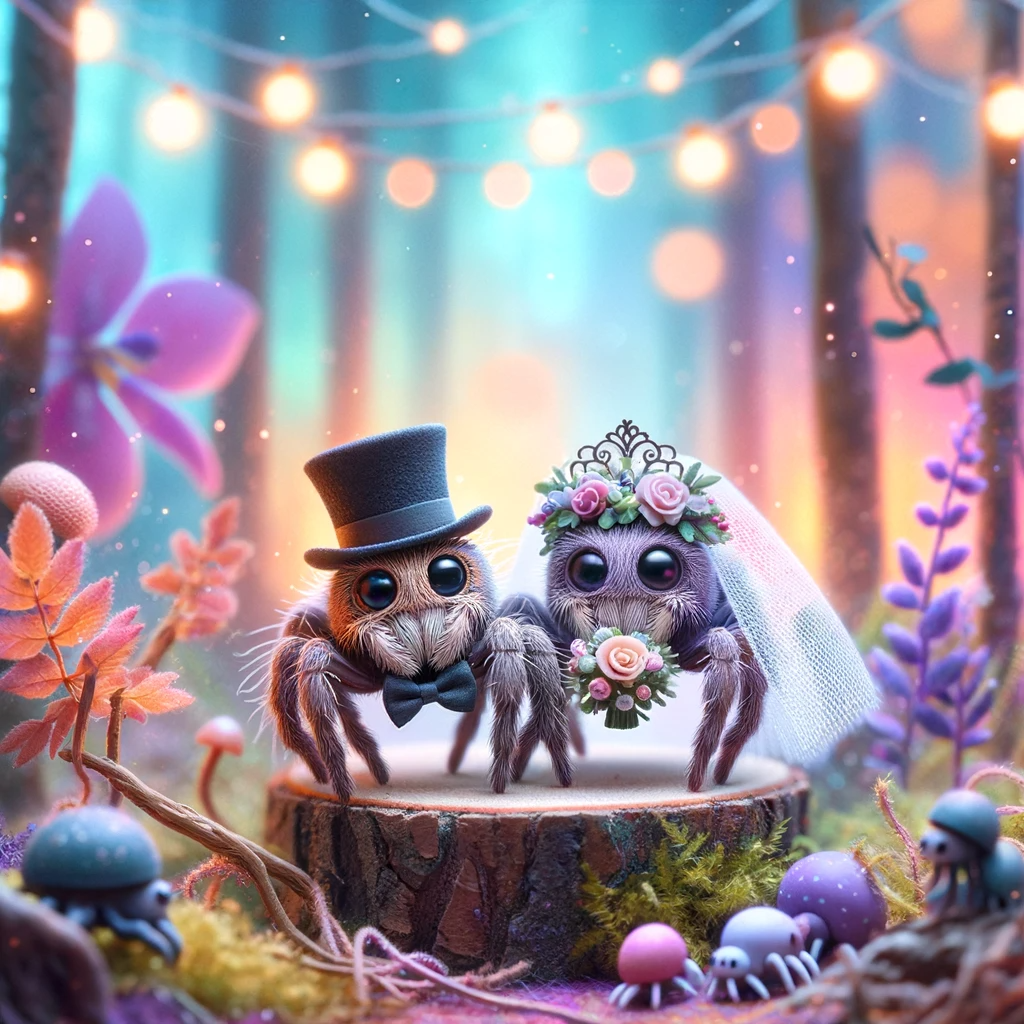
The folktale of the spider’s wedding is a charming and lesser-known European story that weaves together the natural world’s intricacies with the rich tapestry of folklore. This tale, which varies slightly across different European cultures, speaks volumes about the delicate balance in nature and the significance of even the smallest creatures.
Origins and Variations
The story of the spider’s wedding has roots in various European folk traditions. It is particularly prevalent in Eastern European cultures, where spiders are often seen as symbols of patience, skill, and creativity. The tale typically revolves around a community of spiders who decide to celebrate the wedding of two of their members in a grand fashion.
The Narrative
On the eve of the wedding, the spiders work together to weave a spectacular web. This web is not just a marvel of natural architecture but also a symbol of unity and collaboration. The story describes the web in vivid detail, highlighting the intricate patterns and the shimmering dew that adorns it in the morning light.
The wedding itself is a jubilant affair, attended by various creatures of the forest. This assembly underscores a fundamental message of the story: every creature, no matter how small, plays a crucial role in the tapestry of life.
The Aftermath and Moral
The climax of the story often involves a human stumbling upon the magnificent web and marveling at its beauty. This interaction serves as a reminder of the harmonious coexistence between humans and nature. The moral of the story is about respecting and appreciating the smaller, often overlooked aspects of the natural world.
Importance in the Natural World
Ecological Significance
The folktale of the spider’s wedding does more than just entertain; it educates about the ecological importance of spiders. These arachnids are vital in controlling insect populations and thus maintaining the balance in ecosystems. The story, through its anthropomorphic portrayal of spiders, fosters a sense of empathy and understanding towards these often-misunderstood creatures.
Cultural Impact
Culturally, the story has been a tool for parents and educators to instill values of environmental stewardship in children. By presenting nature as a magical and interconnected realm, it encourages a deeper appreciation and respect for the environment.
Modern Relevance
In today’s world, where environmental concerns are increasingly at the forefront, the tale of the spider’s wedding is more relevant than ever. It serves as a gentle yet powerful reminder of our responsibility to protect and cherish the natural world.
Conclusion
The European folktale of the spider’s wedding is a beautiful blend of storytelling and environmental education. It highlights the significance of every creature in the ecosystem and encourages a respectful and appreciative relationship with nature. As we navigate the challenges of environmental conservation, such tales offer both wisdom and inspiration, reminding us of the intricate and beautiful web of life to which we all belong.
